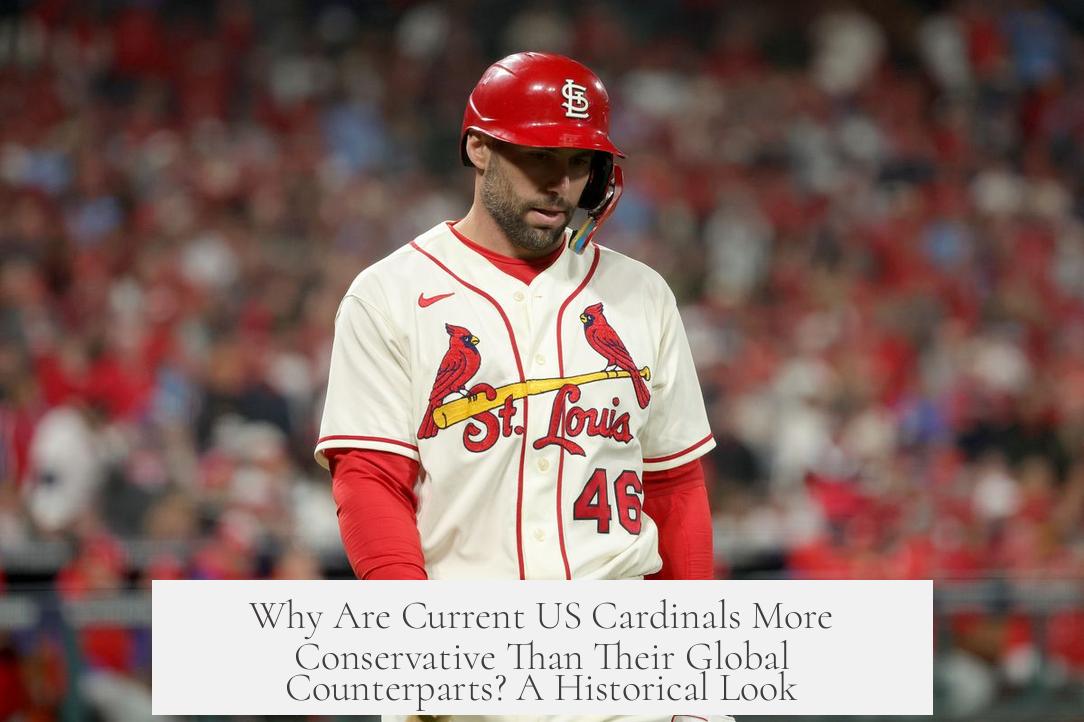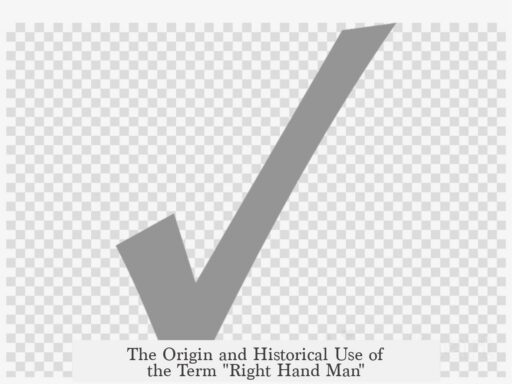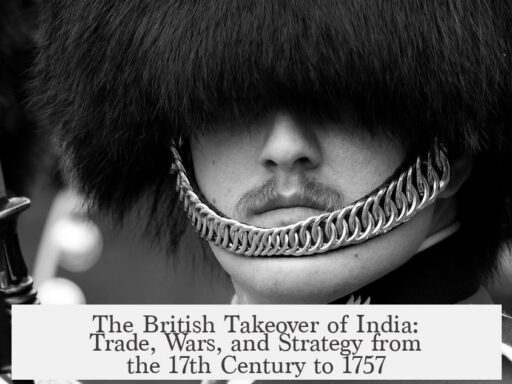The current US cardinals being more conservative than those in the broader modern Catholic Church is not a recent development but stems from historical Vatican preferences shaped by the unique American context. These preferences arose from challenges tied to the US political and religious landscape and have influenced the American Church’s leadership across decades.
Historically, the Vatican has prioritized appointing conservative bishops and cardinals in the United States. This approach responds to a distinctive situation created by the First Amendment’s Establishment Clause. Unlike Europe, where many countries had state-supported churches, the US constitution forbids government support of religion.
Because of this separation of church and state, the Catholic Church in America could not count on state funding or political backing. In fact, it endured discrimination well into the 20th century. The Vatican sought vigorous and resolute bishops who would advance the Church’s mission despite these obstacles. Such leaders needed to resist pressures from the secular environment and to protect Catholic interests in a sometimes hostile religious landscape.
Another major factor shaping Vatican decisions was concern regarding modernism among American clergy. Since the late 19th century, many progressive priests and bishops in the US engaged deeply in interfaith dialogue with liberal Protestant and Jewish groups. Although these efforts aligned with American religious and political trends, Vatican authorities considered this approach contrary to official Church teachings.
The fear was that American liberal clergy could dilute Catholic doctrine or weaken the Church’s influence. This concern was less pressing in Italy or other Catholic-majority countries, where interfaith activity had less impact. The Vatican therefore viewed American candidates for leadership with caution, favoring those firmly committed to traditional Catholic doctrine and resistant to modernist trends.
The very nature of the American political system proved another challenge. The Vatican regarded the “American project” of religious pluralism and strict church-state separation as not only misguided but at times in direct conflict with the Church’s mission. Bishops who embraced the US constitutional framework too fully, particularly regarding religious freedom and secular governance, were seen as suspect and often overlooked for promotion.
| Influencing Factors | Description |
|---|---|
| Establishment Clause | Prevented state support; led Vatican to seek strong leaders defending Catholic interests amid discrimination. |
| Modernism Concerns | Wary of clergy pursuing interfaith dialogue contrary to Church teachings, especially in America. |
| American Political Values | Church viewed religious pluralism and secularism as challenges; preferred bishops unswayed by these values. |
A significant historical illustration is the so-called “Peace Policy” under President Grant. This policy granted control of Indian reservations to religious denominations. The Catholic Church argued for its share based on the Establishment Clause logic, but many reservations historically linked to the Church went to Protestant groups. This outcome underscored the need for bishops willing to assert Catholic rights firmly within American politics.
Over time, the Vatican’s strategic choice to promote conservative and resolute leaders in the US laid the groundwork for the modern American Catholic hierarchy. The Church recognized early on that the US was rapidly becoming vital to global Catholicism’s future after the Civil War. Avoiding early involvement in the conflict demonstrated Vatican caution, but securing a strong foothold afterward became a priority.
Today, Catholicism is the largest single Christian denomination in the US, growing further due to immigration from Latin America. This demographic shift might influence some aspects of the Church, but the historical foundation for conservative leadership among US cardinals remains strong. The Vatican’s approach reflects enduring concerns over religious identity, doctrinal fidelity, and navigating American pluralism.
- The conservatism of US cardinals has long-standing historical roots.
- Vatican preference stems from the US church-state separation and discrimination.
- Concerns over modernism and interfaith dialogue drove appointments of resilient leaders.
- The Church viewed American political values as challenging to Catholic mission.
- This shaped a conservative American Catholic hierarchy distinct from other regions.
Why Are Current US Cardinals More Conservative Than Their Global Counterparts? A Historical Look

The short answer: Yes, the conservative leanings of current US cardinals are not a recent phenomenon. This trend has deep historical roots, tied closely to America’s unique religious and political landscape, and the Vatican’s strategic preferences over many decades.
So, how did the Vatican come to favor conservative US cardinals? It’s a story of church survival, political caution, and cultural clashes. Pull up a chair, and let’s dive into this fascinating chapter of Catholic history.
The Vatican’s Long History with Conservative US Bishops
Historically, the Vatican has had a clear preference for conservative bishops and cardinals in the US. This wasn’t a mere whim but a calculated move based on several challenges the Church faced on American soil.
Here’s a fun fact: Unlike many countries where the Catholic Church enjoyed royal or state backing, the US was a different beast. Thanks to the First Amendment’s Establishment Clause, the Church couldn’t rely on state support. Worse, until the 1950s, Catholics faced active discrimination in what was supposedly a “land of religious freedom.”
So, the Vatican sought leaders who wouldn’t flinch—bishops who would staunchly defend Catholicism and aggressively pursue its spread in the often hostile American environment.
Why Conservative? Understanding the Vatican’s Concerns
First, the American legal and political environment was unique. The Establishment Clause meant the Church had no official state support. This was sharply different from countries where Church and state were more entwined.
“Give us bishops who don’t bend,” the Vatican seemed to say. Because any sympathy toward the American ‘project’—separation of church and state, religious pluralism—was viewed as a threat to Catholic unity and mission.
Second, the Vatican worried about modernism and interfaith dialogue. During the 20th century, many liberal American priests and bishops sought out dialogues with Protestants and Jews. While this sounds nice today, back then, it was practically sacrilege to Vatican eyes. It conflicted with strict church teachings, and the Vatican wanted bishops to resist these progressive trends vigorously.
Contrast this with Italy or Spain, where the Church held dominant cultural power and faced fewer internal challenges on these fronts. The US was different—diverse, democratic, and religiously pluralistic.
Third, the Vatican saw the American project as actively opposed to the Church’s mission. Any bishop too invested in American secular values, especially the separation clauses, was suspect. The Church feared that these values would dilute Catholic identity and authority. So, conservative bishops considered “unbending” were the go-to leaders for American dioceses.
The Separation of Church and State: A Mid-20th Century Reality Check
Interestingly, the full-separation reality only set in mid-20th century. For instance, President Grant’s “Peace Policy” in the late 19th century gave control of Indian reservations to various Christian denominations, with Catholics often losing ground in certain regions.
The Catholic Church cleverly used the Establishment Clause—not to oppose the policy outright but to argue that it would be unfair if Protestants got more control. This political chess game shows why the Vatican demanded bishops who could stand firm, asserting Catholic rights in a predominantly Protestant America.
Vatican’s Strategy Amid American Political Shifts

The Vatican’s response to America’s evolving political scene backs all this up. They watched carefully during the Civil War, wary of early intervention. Once the Union seemed likely to win, they moved to establish a strong base in the US.
And it paid off. Today, Catholicism is the largest Christian denomination in the country. The Church continues to benefit from waves of Latin American immigration, which should expand its influence, assuming political shifts don’t hamper this growth.
Why does all this matter today? Understanding this history explains why US cardinals skew conservative compared to many of their more progressive colleagues worldwide. It’s a legacy of strategic choices shaped by politics, theology, and survival.
What Can We Learn From This For Today?
- Church Leadership Reflects Broader Contexts: The Vatican’s preference for conservative US cardinals stems from historical pressures and challenges, not random bias.
- American Religious Freedom Is Complex: The Establishment Clause, often celebrated, created a tough environment for Catholics, influencing leadership choices.
- Conservatism as Strategy: Conservatism here is a tool for maintaining Church identity amid pluralism and secular politics.
So, next time someone asks, “Why are American cardinals so conservative?” you can answer: It’s not just theology, it’s history and politics mixed with the Vatican’s strategic survival instincts.
Have you noticed how this conservatism shows up in public debates or Church policies? What impact do you think America’s unique religious landscape will have on the Catholic Church’s future? Let’s keep the conversation going.



